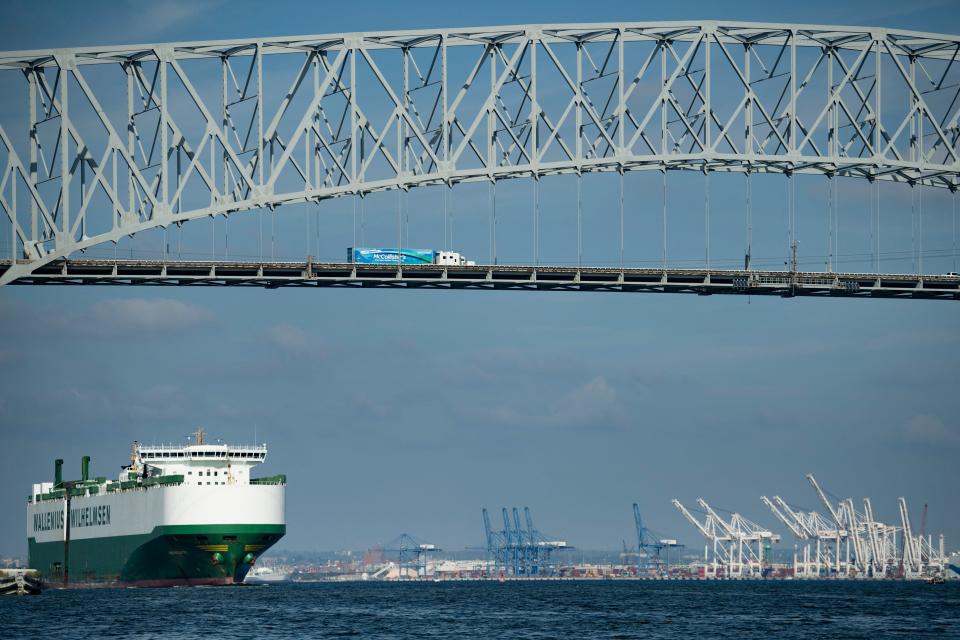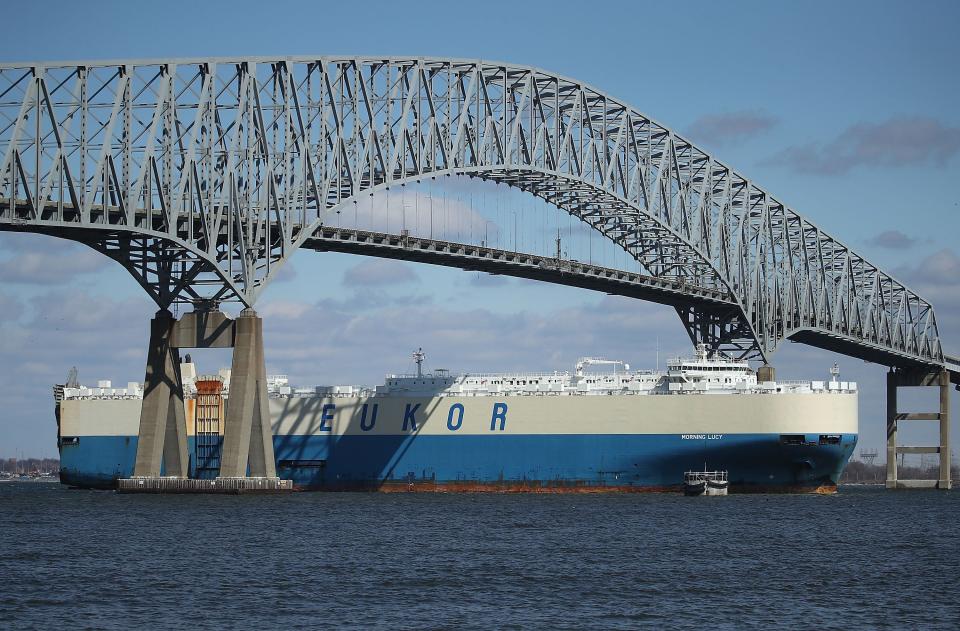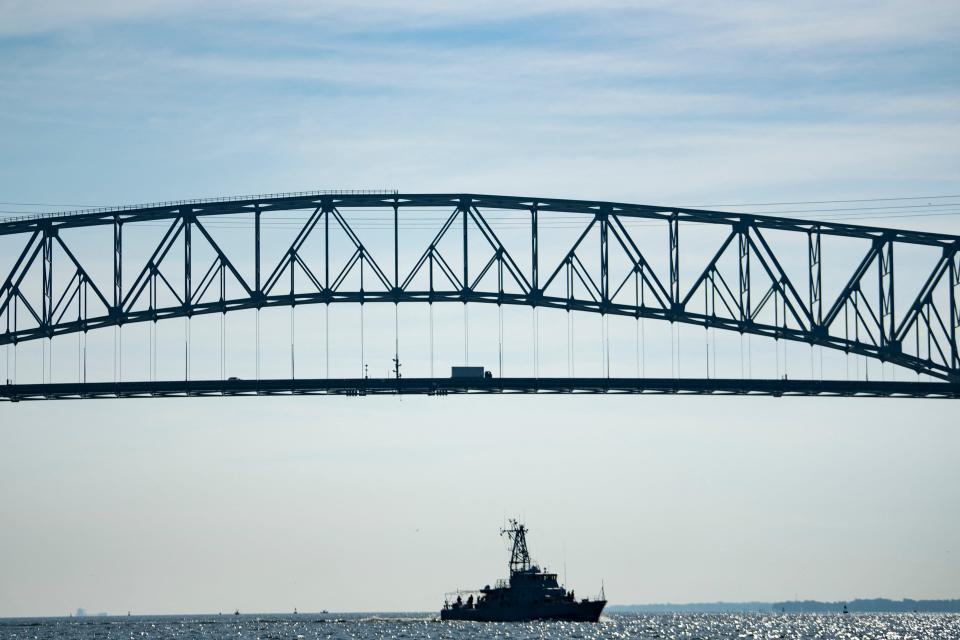'No ordinary bridge': What made the Francis Scott Key Bridge a historic wonder
- Oops!Something went wrong.Please try again later.
Before its collapse on Tuesday, the Francis Scott Key Bridge in Baltimore was considered a seminal engineering accomplishment.
The four-lane bridge, which collapsed into the Patapsco River after a vessel struck one of its main support columns early Tuesday morning, was was considered "a major milestone in Maryland’s transportation planning," according to the nonprofit Preservation Maryland.
Six missing construction workers on the bridge at the time of the collapse are missing and presumed dead, according to U.S. Coast Guard Rear Admiral Shannon Gilreath. Two others were rescued, one unharmed and the other in "very serious condition," according to Maryland Transportation Secretary Paul Wiedefeld.
U.S. Secretary of Transportation Pete Buttigieg said at a news conference that the incident will have major and protracted impact to supply chains. He added that it's too soon to tell when the port will be cleared and reopened.
"This is no ordinary bridge. This is one of the cathedrals of American infrastructure. It has been part of the skyline of this region for longer than many of us have been alive," Buttigieg said. "The path to normalcy will not be easy. It will not be quick, it will not be inexpensive, but we will rebuild together."

The second-longest continuous truss bridge
The Francis Scott Key Bridge was the second-longest continuous truss bridge span in the world, according to the American Civil Engineering Society. Until Tuesday it was still the second-longest in the U.S. and third globally.
The steel-arched bridge opened in March 1977 after years of construction that began in 1972, according to the Maryland Transportation Authority.
The bridge crossed over the Patapsco River on Interstate 695, or the Baltimore Beltway, serving as the highway's final link. It was the farthest of three tollways that cross the city's harbor.

Bridge named after 'Star Spangled Banner' writer
The bridge was named after the "Star Spangled Banner" songwriter Francis Scott Key.
The structure crossed over the Patapsco River near where Key was inspired to write the lyrics for the national anthem, according to the transportation authority.
It is believed that the Frederick, Maryland amateur poet was inspired to write the song after witnessing the bombardment of Fort McHenry on Sept. 12, 1814.

Port handled most auto trucks in US
In addition to its historical significance, the bridge played an essential role in East Coast shipping.
In 2023, the port's private and public terminals handled more autos and light trucks than any other U.S. port at 847,158. According to a Maryland government website, the port was also critical for shipping of farm and construction machinery, coal, gypsum and sugar.
The four-lane bridge structure alone is 1.6 miles long. When including approach roadways like the Curtis Creek Drawbridge, the facility's entire stretch was around 10.9 miles long, the transportation authority said.
Contributing: Sarah Al-Arshani, Charles Ventura, Thao Nguyen, Susan Miller and Phaedra Trethan
Live updates: Baltimore's Key Bridge collapses after ship strike; construction crew missing
This article originally appeared on USA TODAY: Why the Francis Scott Key Bridge was once considered a major wonder

